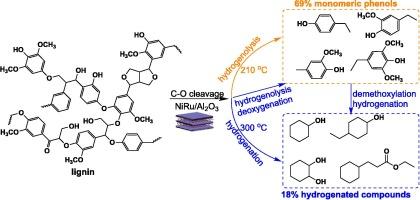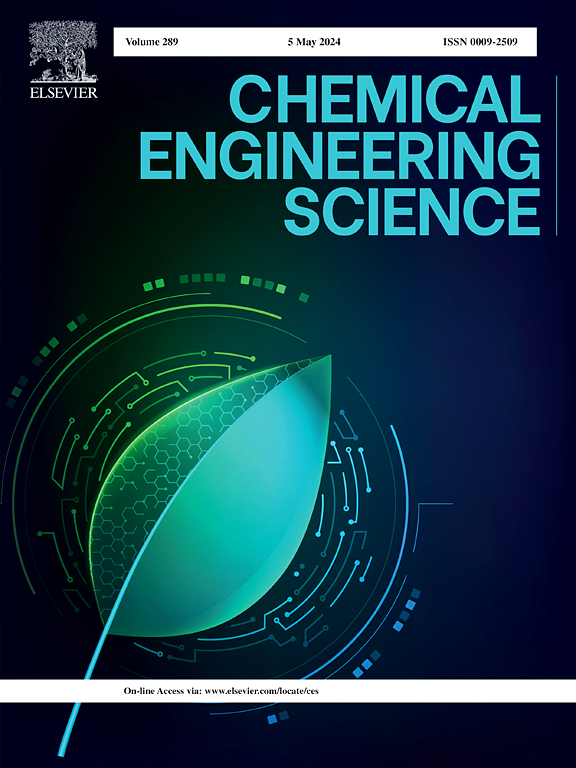Temperature regulating the directional catalytic transfer hydrogenolysis of lignin over a in situ topologically prepared NiRu/Al2O3
IF 4.1
2区 工程技术
Q2 ENGINEERING, CHEMICAL
引用次数: 0
Abstract
Exploiting highly active heterogeneous catalysts is vital for depolymerizing lignin. Herein, a NiRu/Al2O3-IT catalyst via simple in situ topological transformation of layered double hydroxide was fabricated for catalytic transfer hydrogenolysis of enzymatic hydrolysis lignin (EHL). Model compounds containing aryl ether bonds and C–C linkages can be effectively cleaved and hydrogenated, respectively over the catalyst under mild conditions, indicating the high activity. Effect of reaction temperature on NiRu/Al2O3-IT catalytic performance for EHL hydrogenolysis and the resulting soluble portion (SP) composition was comparatively explored. The results exhibit that strong interaction between Ni and Ru and high dispersion of NiRu/Al2O3-IT are responsible for the efficient cleavage of ether bonds in EHL. The submaximum and maximum yields of SP with high monomers/dimers contents were acquired at 210 (SP210) and 300 °C (SP300), respectively. Monomeric phenols detected in SP210 accounts for 69% of total organic compounds, while considerable hydrogenated compounds were identified in SP300. In addition, more lowly condensed oxygenates with less oxygen atoms were analyzed in SP300 with FTICRMS, indicating that hydrogenation and deoxygenation were significantly enhanced with NiRu/Al2O3-IT at higher temperature, which was also proved by ultimate and 2D HSQC NMR analyses.

求助全文
约1分钟内获得全文
求助全文
来源期刊

Chemical Engineering Science
工程技术-工程:化工
CiteScore
7.50
自引率
8.50%
发文量
1025
审稿时长
50 days
期刊介绍:
Chemical engineering enables the transformation of natural resources and energy into useful products for society. It draws on and applies natural sciences, mathematics and economics, and has developed fundamental engineering science that underpins the discipline.
Chemical Engineering Science (CES) has been publishing papers on the fundamentals of chemical engineering since 1951. CES is the platform where the most significant advances in the discipline have ever since been published. Chemical Engineering Science has accompanied and sustained chemical engineering through its development into the vibrant and broad scientific discipline it is today.
 求助内容:
求助内容: 应助结果提醒方式:
应助结果提醒方式:


